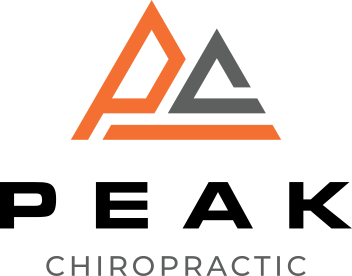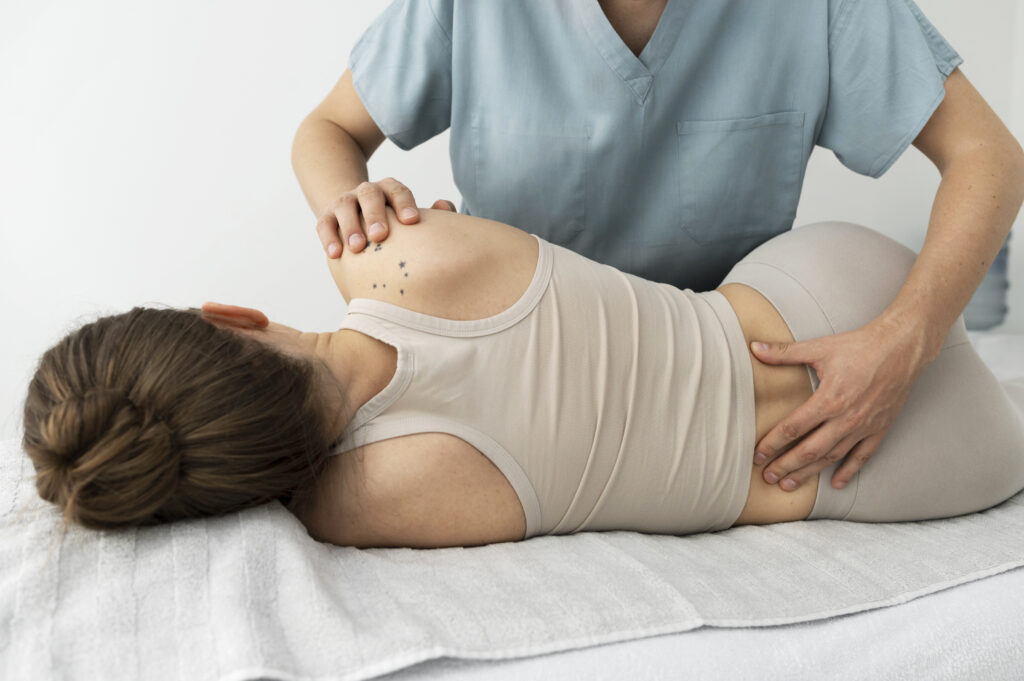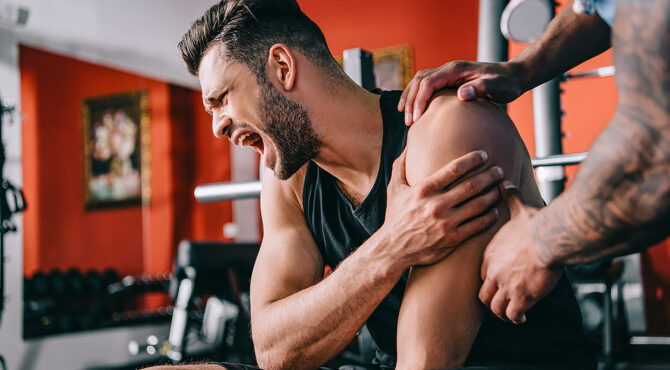You might not realize how much your body is capable of until you start to explore the fundamentals of movement. Understanding body mechanics and integrating proper techniques can transform the way you engage in daily activities and workouts. By focusing on aspects like posture, flexibility, and core strength, you can reveal a level of fluidity in your movements that feels effortless. However, the journey doesn't stop there; uncovering the nuances of your body's potential involves a few more key elements that could greatly enhance your overall performance. What are these elements, and how can they reshape your approach?
Understanding Body Mechanics
Understanding body mechanics is vital for anyone looking to enhance their physical performance and prevent injuries. By grasping how your body moves and functions, you can optimize your training routines and daily activities. Body mechanics refers to the way your muscles, bones, and joints work together to produce movement. When you understand this concept, you can improve your posture, alignment, and balance, all of which contribute to better overall performance.
Start by paying attention to your posture during various activities. Whether you're lifting weights or sitting at your desk, maintaining a neutral spine and proper alignment is important. This means keeping your shoulders back, your head aligned with your spine, and your feet firmly planted. When you maintain good posture, you reduce the risk of strain on your muscles and joints.
Next, focus on the principles of movement. When you perform exercises or physical tasks, think about engaging the correct muscles. For instance, when you squat, it's important to push through your heels while keeping your chest upright. This not only helps you lift more effectively but also minimizes the risk of injury.
Finally, recognize the importance of breathing. Proper breathing techniques can enhance your performance and stabilize your core, allowing you to execute movements more efficiently.
Importance of Flexibility
Flexibility plays an integral role in maximizing your physical performance and reducing the risk of injuries. When you incorporate flexibility training into your routine, you enhance your joints' range of motion, allowing for smoother and more efficient movements. This increased range helps you perform better in various activities, whether you're running, lifting weights, or participating in sports.
Additionally, flexibility helps alleviate muscle tension and stiffness, which can lead to discomfort or injuries during physical activity. By maintaining peak flexibility, you prepare your muscles and joints to handle the demands of movement, reducing the likelihood of strains or sprains.
You'll also find that improved flexibility can enhance your posture and balance, which are vital for overall stability and coordination.
It's important to remember that flexibility isn't just about performing well; it's also about recovery. Stretching regularly can improve blood flow to your muscles, aiding in quicker recovery times after workouts. This means you can get back to your activities sooner and with less soreness.
To reap these benefits, dedicate time each week to stretching and flexibility exercises. Incorporate dynamic stretches into your warm-up and static stretches into your cool-down routine. This balanced approach guarantees that your muscles are prepared for action and helps maintain their elasticity over time.
Embrace the importance of flexibility in your fitness journey, and you'll reveal greater potential in your body, enabling seamless movement in all aspects of your life.
Strengthening Core Muscles
A strong core is crucial for overall fitness and athletic performance, as it serves as the foundation for nearly every movement your body makes. When your core muscles are strong, you'll notice improvements in your stability, posture, and even your ability to lift heavier weights or run longer distances.
Core strength isn't just about having visible abs; it involves a complex group of muscles, including your abdominal muscles, obliques, lower back, and pelvic floor.
To strengthen your core, you don't need to spend hours at the gym. Simple exercises can be incredibly effective. Start with planks—hold a plank position for 30 seconds to a minute, focusing on keeping your body in a straight line. As you progress, try side planks and variations to challenge your muscles further.
Incorporating movements like Russian twists and bicycle crunches can also engage your obliques and deepen your core strength.
Remember to focus on your breathing during these exercises. Exhale as you engage your core, and inhale as you relax. This won't only enhance the effectiveness of your workout but also help you develop a mind-muscle connection, which is essential for maximizing your results.
Consistency is key. Aim to incorporate core workouts into your routine two to three times a week. As your core strengthens, you'll find everyday activities become easier, and you'll be well on your way to revealing your body's full potential for seamless movement.
Enhancing Balance and Stability
To enhance your balance and stability, incorporating specific exercises into your routine can make a significant difference. Balance isn't just about standing on one leg; it's about engaging your entire body and mind.
Start with simple exercises like single-leg stands. Focus on one leg, hold for 20-30 seconds, and switch. This will activate your core muscles and improve proprioception, which is your body's ability to sense its position in space.
Next, try incorporating dynamic movements. Activities like tai chi or yoga not only improve balance but also enhance flexibility and strength. These practices require you to control your body's movements, which translates to better stability in daily activities.
Don't forget about stability ball exercises. Sitting on a stability ball engages your core while challenging your balance. Once you're comfortable, try doing exercises like squats or push-ups on the ball for an added challenge.
Incorporating balance boards or wobble cushions can also enhance your routine. These tools force your body to stabilize itself, making your muscles work harder.
Finally, consider adding agility drills like lateral hops or cone drills. These movements improve your coordination and response time, which are essential for maintaining balance in various activities.
Breathing Techniques for Movement
Breathing plays a fundamental role in enhancing your movement and overall performance. When you incorporate effective breathing techniques into your routine, you can boost your energy levels, improve your focus, and enhance your physical capabilities. As you engage in movement, whether it's a workout, dance, or any physical activity, your breath acts as a powerful tool to maximize your potential.
Start by mastering diaphragmatic breathing. This technique encourages deep breaths that fill your lungs completely. As you inhale deeply through your nose, allow your abdomen to expand, feeling your diaphragm engage. Exhale slowly through your mouth, letting your abdomen fall. This method not only increases oxygen flow but also helps you stay calm and centered during movement.
Next, sync your breath with your movements. Whether you're lifting weights or running, establish a rhythm. Inhale during the preparation phase of a movement and exhale during exertion. For example, breathe in as you lower into a squat and exhale while pushing back up. This synchronization fuels your efforts and maintains stability.
Lastly, practice breath control. Focus on maintaining a steady breath throughout your activity. If you find yourself holding your breath, it can lead to tension and fatigue. Instead, let your breath flow naturally, allowing it to guide your movements.
Mind-Body Connection
Understanding the mind-body connection is essential for accessing your body's full potential.
By tuning into your body's signals and harmonizing your breath with movement, you can enhance your performance.
Visualization techniques can also help you focus and achieve your goals more effectively.
Awareness of Body Signals
Although you might often overlook your body's signals, tuning into them can be a powerful way to enhance your well-being. Your body communicates with you constantly, whether through tension in your muscles, a racing heart, or fatigue. By becoming more aware of these signals, you can better understand your physical and emotional needs.
Start by paying attention to how your body feels in different situations. Notice any discomfort or pain; these sensations often indicate imbalances or stressors that require your attention. When you're feeling energetic, recognize that as a cue to engage in movement or activity. Conversely, if you're tired, it's a signal to rest and recharge.
Practicing mindfulness can help you become more attuned to these signals. Set aside a few moments each day to check in with your body. Ask yourself how you feel—physically and emotionally.
This practice not only enhances your awareness but also strengthens your mind-body connection.
Breathing and Movement Harmony
Finding the right balance between breathing and movement can transform your physical activity into a more harmonious experience. When you synchronize your breath with your movements, you create a rhythm that enhances both performance and enjoyment.
Start by becoming aware of your breath. Are you holding it? Or is it shallow?
As you engage in physical activity, inhale deeply through your nose, allowing your diaphragm to expand. This breath fuels your muscles and boosts your energy. Exhale fully through your mouth, releasing tension and promoting relaxation.
Now, integrate your breath with your movements. For instance, if you're lifting weights, inhale as you lower the weights and exhale as you lift. This not only helps you maintain focus but also stabilizes your core, reducing the risk of injury.
Listen to your body. If you feel out of sync, pause and recalibrate your breath. The connection between breathing and movement isn't just about efficiency; it's about creating a mindful practice that enhances your overall experience.
Embrace this harmony, and you'll reveal your body's potential for seamless movement and greater enjoyment in all physical activities.
Visualization Techniques for Performance
Harnessing the power of visualization can markedly elevate your performance in any physical activity. When you mentally picture yourself executing a skill, you're not just daydreaming; you're training your brain. This technique helps establish neural pathways, making your movements more fluid and instinctual.
Start by finding a quiet space where you can focus. Close your eyes and take a few deep breaths. Imagine yourself in your chosen activity—whether it's running, swimming, or performing on stage. Visualize every detail: the environment, your posture, and the sensations in your body. Picture yourself overcoming challenges effortlessly, feeling the success wash over you.
Practice this visualization regularly, ideally before training or competition. The more vivid your imagery, the more effective it will be. You can also incorporate positive affirmations, reinforcing your belief in your capabilities. For instance, tell yourself, "I'm strong, agile, and confident."
Using visualization not only improves your physical performance but also boosts your mental resilience. When you connect your mind and body, you release your full potential, leading to seamless movement and greater achievement in your pursuits.
Incorporating Functional Training
Functional training is a powerful approach that focuses on movements you perform in everyday life, making it an essential component of any fitness journey. By incorporating functional exercises, you'll improve your strength, balance, flexibility, and coordination, which can enhance your performance in daily activities and sports.
To get started, think about the movements you regularly perform. Squatting, lifting, pushing, and pulling are all common actions. You can integrate exercises like squats, deadlifts, push-ups, and kettlebell swings into your routine. These exercises mimic real-life movements, helping you build strength and stability in a practical way.
Consider using tools like resistance bands, medicine balls, or stability balls. They can add variety and challenge to your workouts while also targeting multiple muscle groups simultaneously. Additionally, incorporating bodyweight exercises can be effective and convenient, as they require no equipment.
Make sure you maintain proper form during each exercise to prevent injuries and maximize benefits. Start with lighter weights or simpler variations, and gradually progress as you gain confidence and strength. You can also explore different training modalities like circuit training or high-intensity interval training (HIIT) that emphasize functional movement patterns.
Lastly, don't forget to include a warm-up and cooldown in your sessions. This will prepare your body for movement and aid recovery afterward.
Recovery and Self-Care Practices
Prioritize recovery and self-care practices as fundamental components of your fitness journey. Your body needs time to heal and adapt after workouts, and incorporating effective recovery techniques can enhance your performance and prevent injury.
Start by ensuring you get adequate sleep. Aim for 7-9 hours per night, as quality sleep plays a significant role in muscle repair and overall health.
Incorporate active recovery days into your routine. Light activities like walking, yoga, or swimming help promote blood flow and reduce muscle soreness without adding excessive strain.
Stretching is another essential practice. Spend a few minutes each day focusing on key muscle groups to improve flexibility and alleviate tightness.
Nutrition also plays a significant role in recovery. Fuel your body with nutrient-dense foods, particularly post-workout. Include a mix of protein and carbohydrates to support muscle repair and replenish glycogen stores.
Staying hydrated is equally important; aim to drink plenty of water throughout the day, especially before and after exercise.
Don't underestimate the power of mindfulness. Practices like meditation or deep-breathing exercises can help reduce stress, which positively impacts your physical recovery.
Consider incorporating foam rolling or massage therapy into your routine as well. These techniques can release tension in your muscles, improve circulation, and enhance overall recovery.
Setting Movement Goals
To access your body's potential, it's essential to set clear movement goals.
By defining specific objectives, you'll have a roadmap to guide your progress.
Plus, tracking your achievements will keep you motivated and help you adjust your goals as needed.
Defining Specific Objectives
Setting movement goals is like charting a course for a journey; without clear objectives, you might drift aimlessly.
To guarantee you're focused and motivated, it's essential to define specific objectives that resonate with your personal aspirations. Here's how to get started:
- Identify Your Purpose: Think about why you want to improve your movement. Is it for better strength, flexibility, or endurance? Knowing your "why" will guide your goals.
- Be Specific: Instead of saying, "I want to get fit," aim for something measurable, like "I want to run 5 kilometers in under 30 minutes." Clear objectives help create a roadmap for your progress.
- Set a Timeline: Establish a realistic timeframe for achieving your goals. Whether it's a month or six months, having a deadline keeps you accountable and motivated.
Tracking Progress Effectively
Once you've defined your specific objectives, the next step is tracking your progress effectively. You'll want to establish clear metrics to evaluate your achievements. Whether it's increasing your range of motion, enhancing endurance, or mastering a new movement pattern, having quantifiable goals helps you stay motivated.
Consider keeping a movement journal. Document your workouts, noting the exercises, repetitions, and any feelings or challenges you encounter. This not only provides insight into your progress but also highlights areas needing improvement.
If you prefer digital tools, there are numerous apps designed to track physical activity, making it easier to visualize your growth.
Regularly assess your progress against your goals. Set aside time weekly or monthly to review your journal or app data. Celebrate small victories, like completing an additional set or achieving a new personal best. This keeps your spirits high and reinforces your commitment to your goals.
Lastly, don't hesitate to adjust your goals as you evolve. Flexibility in your approach allows you to respond to your body's changes and keeps your journey fresh and engaging.
Conclusion
Accessing your body's potential for seamless movement starts with small, intentional changes. By understanding body mechanics, prioritizing flexibility, and strengthening your core, you lay the groundwork for improved performance. Incorporating balance training and effective breathing techniques amplifies your efforts, while mindfulness practices deepen your mind-body connection. Don't forget to embrace functional training and prioritize recovery to keep your body in peak condition. Set clear movement goals, and watch as you transform your everyday activities into fluid, effortless motions.



